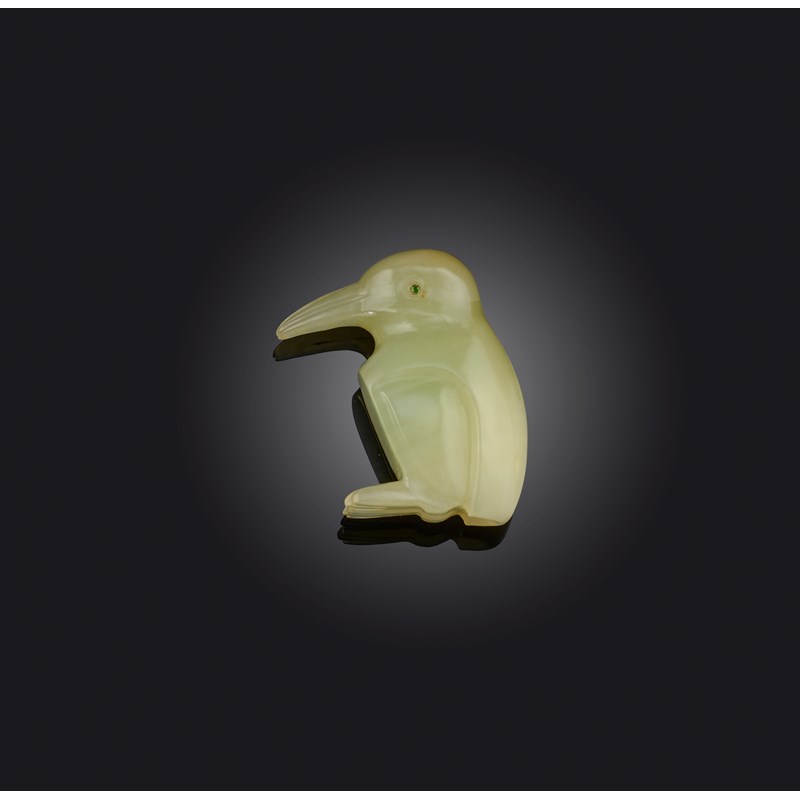Fabergé, a rare bowenite and demantoid carving, early 20th century, modelled as a stylised
Fabergé, a rare bowenite and demantoid carving, early 20th century, modelled as a stylised kingfisher in carved bowenite, its eyes set with circular-cut demantoid garnets, height 4.5cm, unsigned
Fabergé's animal carvings are among their most celebrated creations, adored and collected by some of the most prominent figures of the early 20th century. Russia's stone carving industry centred on the city of Yekaterinburg, where Fabergé acquired the workshop of lapidary Karl Woerffels around 1884, and it was this workshop that produced the majority of them - the carvers Kremlev, Derbyshev and Svetchnikov, managed by the German Alexander Meier. The stones were carefully selected by Carl Fabergé's son Agathon, and were mostly of Russian origin, taking advantage of the rich mineral resources of the Ural mountains and Siberia. The animal carvings found immense popularity with a number of the firm's key patrons, most notably the British royal family, whose collection boasts more than 350 animals, and Léopold de Rothschild, who had his racehorses similarly immortalised by Fabergé's sculptors.
While these studies were often remarkably lifelike and detailed, among Fabergé's more unusual hardstone carvings are those taking inspiration from Japanese netsuke, particularly their strikingly abbreviated, stylised depictions of birds in a style known as ittōbori (literally 'one blade carving'). In common with many collectors and artists fascinated by the new influx of Japanese art at the beginning of the 20th century, Carl Fabergé himself had personally put together a collection of these small Japanese carvings in ivory and wood, which were originally designed to suspend pouches or cases from the belts that fastened traditional Japanese dress. Perhaps the best known results of Fabergé's appreciation of ittōbori netsuke are direct copies of a popular Japanese model known as fukura suzume, depicting exaggerately round sparrows in flight. In this same simplified style but in stark contrast are Fabergé's still, watchful studies of kingfishers.
The present example, in milky pale green bowenite from the Ural mountains, is among the simplest and most pared back of Fabergé's kingfisher studies, its green eyes glinting with another one of Russia's most famous gemmological exports, demantoid garnets. Kingfishers were apparently referred to by Fabergé as 'icebirds', and appeared in the ledgers when one was purchased by King Edward VII in November 1907, and another was purchased by his son, the future King Edward VIII in 1913, not long before the London Fabergé branch was forced to close and the firm's era at forefront of European jewellery design came to an abrupt end.
Illustrated: Geza von Habsburg, Fabergé, Geneva, 1987, no. 307, its eyes miscatalogued as peridot
For examples of Fabergé's kingfisher carvings in the Royal Collection, please see collection nos. RCIN 40387 and RCIN 40385.
For further discussion of the influence of netsuke on Fabergé's hardstone animal carvings, see Geoffrey Munn, Fabergé and Japan, The Antique Collector, January 1987, p.37-45, which also illustrates a kingfisher, fig.5




 Live online bidding is available via our own
Live online bidding is available via our own